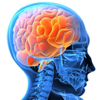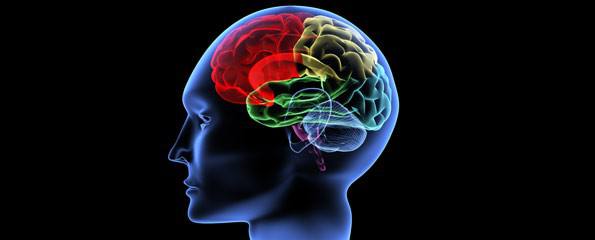Autism early intervention found to normalise brain activity
An intensive early intervention therapy that is effective for improving cognition and language skills among very young children with autism also normalises their brain activity, decreases their autism symptoms and improves their social skills, a nationwide study has found. The researchers said the study is the first to demonstrate that an autism early intervention program can normalise brain activity.
“We know that infant brains are quite malleable and previously demonstrated that this therapy capitalises on the potential of learning that an infant brain has in order to limit autism’s deleterious effects,” said study author Sally Rogers, professor of psychiatry and behavioural sciences and a researcher with the UC Davis MIND Institute.
“The findings on improved behavioural outcomes and the ability to normalise brain activity associated with social activities signify that there is tremendous potential for the brains of children with autism to develop and grow more normally,” Rogers said.
Published online in the Journal of the American Academy of Child & Adolescent Psychiatry, the randomised, case-controlled, multi-centred study titled “Early behavioural intervention is associated with normalised brain activity in young children with autism,” found that the children who received the intervention exhibited greater brain activation when viewing faces rather than objects, a response that was typical of the normal children in the study, and the opposite of the children with autism who received other intervention.
The U.S. Centers for Disease Control and Prevention estimates that 1 in 88 children born today will be diagnosed with autism spectrum disorder. Hallmarks of the neurodevelopmental condition include persistent deficits in social communication and relatedness, and repetitive or restrictive patterns of interest that appear in early childhood and impair everyday functioning.
Named the Early Start Denver Model (ESDM), the intervention method was developed by Rogers and Geraldine Dawson, chief science officer of the research and advocacy organisation Autism Speaks. The therapy fuses a play-based, developmental, relationship-based approach and the teaching methods of applied behavioural analysis.
“This may be the first demonstration that a behavioural intervention for autism is associated with changes in brain function as well as positive changes in behaviour,” said Thomas R. Insel, director of the National Institute of Mental Health, which funded the study. “By studying changes in the neural response to faces, Dawson and her colleagues have identified a new target and a potential biomarker that can guide treatment development.”
For the present study, the researchers recruited 48 diverse male and female children diagnosed with autism between 18 and 30 months in Sacramento, Calif., and in Seattle, as well as typically developing case controls. The ratio of male-to-female participants was more than 3-to-1. Autism is five times more common among boys than girls.
Approximately half of the children with autism were randomly assigned to receive the ESDM intervention for over two years. The participants received ESDM therapy for 20 hours each week, and their parents also were trained to deliver the treatment, a core feature of the intervention. The other participants with autism received similar amounts of various community-based interventions as well as evaluations, referrals, resource manuals and other reading materials.
At the study’s conclusion, the participants’ brain activity was assessed using electroencephalograms (EEGs) that measured brain activation while viewing social stimuli – faces – and non-social stimuli — toys. Earlier studies have found that typical infants and young children show increased brain activity when viewing social stimuli rather than objects, while children with autism show the opposite pattern.
Twice as many of the children who received the ESDM intervention showed greater brain activation when viewing faces rather than when viewing objects — a demonstration of normalised brain activity. Eleven of the 15 children who received the ESDM intervention, 73 percent, showed more brain activation when viewing faces than toys. Similarly, 12 of the 17 typically developing children, or 71 percent, showed the same pattern. But the majority — 64 percent — of the recipients of the community intervention showed the opposite, “autistic” pattern, i.e., greater response to toys than faces. Only 5 percent showed the brain activation of typical children.
Further, the children receiving ESDM who had greater brain activity while viewing faces also had fewer social-pragmatic problems and improved social communication, including the ability to initiate interactions, make eye contact and imitate others, said MIND Institute researcher Rogers. Use of the ESDM intervention has been shown to improve cognition, language and daily living skills. A study published in 2009 found that ESDM recipients showed more than three times as much gain in IQ and language than the recipients of community interventions.
“This is the first case-controlled study of an intensive early intervention that demonstrates both improvement of social skills and normalised brain activity resulting from intensive early intervention therapy,” said Dawson, the study’s lead author and professor of psychiatry at the University of North Carolina, Chapel Hill. “Given that the American Academy of Pediatrics recommends that all 18- and 24-month-old children be screened for autism, it is vital that we have effective therapies available for young children as soon as they are diagnosed.”
“For the first time,” Dawson continued, “parents and practitioners have evidence that early intervention can alter the course of brain and behavioural development in young children. It is crucial that all children with autism have access to early intervention which can promote the most positive long-term outcomes.”
(Source: UC Davis Health System: Journal of the American Academy of Child & Adolescent Psychiatry)
More information
 | For more information on brain health, including the anatomy of the brain, the effects of nutrition and exercise on the brain, and the effect of mental activity on health, see Brain Health. |
Dates
Tags
Created by:

 Login
Login














